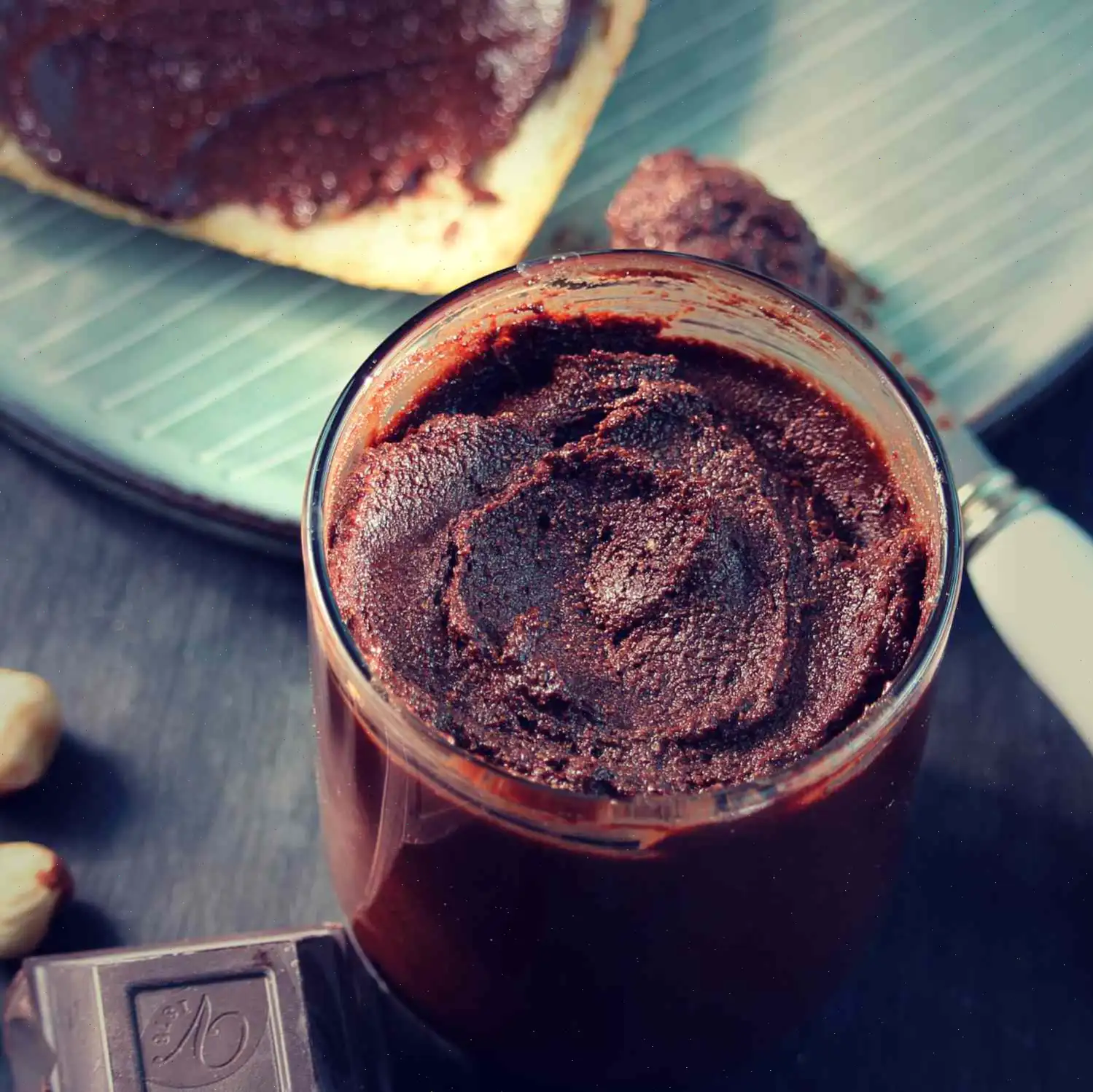
Authentic Kicked-Up Syrian Hummus Recipe
Ingredients
This recipe was developed at its original yield. Ingredient amounts are automatically adjusted, but cooking times and steps remain unchanged. Note that not all recipes scale perfectly.
- 5 unpeeled garlic cloves
- 2 tablespoons extra-virgin olive oil, divided
- 1 (15 ounce) can garbanzo beans, drained
- cup tahini
- cup fresh lemon juice
- 1 teaspoon ground cumin
- 1 teaspoon salt
Directions
- Preheat the oven to 450F (230C).
- Place the unpeeled garlic cloves in the center of a large square of aluminum foil. Drizzle the garlic with 1 tablespoon of olive oil and wrap it tightly in the foil.
- Roast in the preheated oven for 10 to 15 minutes, until the garlic is golden brown. Once roasted, remove from the oven and let it cool for 5 to 10 minutes.
- After cooling, squeeze the roasted garlic out of the peels into a food processor.
- Add the garbanzo beans, tahini, fresh lemon juice, cumin, salt, and the remaining 1 tablespoon of olive oil to the food processor.
- Process everything together until the mixture becomes very creamy.
Tips
For a fresh, herby flavor, add 2 to 3 tablespoons of fresh parsley or mint. You can also try adding 1 teaspoon of curry or paprika for a unique twist. Hummus is incredibly versatile, so feel free to experiment!
If you want to try a Tuscan-style hummus, substitute garbanzo beans with great northern beans and add some fresh basil.
Nutrition Facts (per serving)
- Calories: 84
- Fat: 6g
- Carbohydrates: 6g
- Protein: 3g
Nutrition Facts
Servings Per Recipe: 16
| Nutrient | Amount | % Daily Value* |
|---|---|---|
| Total Fat | 6g | 8% |
| Saturated Fat | 1g | 4% |
| Cholesterol | 0mg | 0% |
| Sodium | 174mg | 8% |
| Total Carbohydrate | 6g | 2% |
| Dietary Fiber | 1g | 5% |
| Total Sugars | 1g | |
| Protein | 3g | 5% |
| Vitamin C | 3mg | 3% |
| Calcium | 21mg | 2% |
| Iron | 1mg | 3% |
| Potassium | 66mg | 1% |
* Percent Daily Values are based on a 2,000 calorie diet. Your daily values may be higher or lower depending on your calorie needs.
** Nutrient information is not available for all ingredients. Amount is based on available nutrient data.
If you are following a medically restrictive diet, please consult your doctor or registered dietitian before preparing this recipe for personal consumption.

Hummus, a beloved Middle Eastern dish, has become a global favorite. While there are countless variations, the "Authentic Kicked-Up Syrian Hummus" stands out for its deep, smoky flavor, thanks to roasted garlic and a dash of cumin. This recipe not only brings the classic hummus to life but also takes it to the next level with added ingredients that intensify the taste, making it a crowd-pleaser at any gathering.
Origin and History
Hummus has roots deeply embedded in the Levantine region, which spans Syria, Lebanon, Jordan, and Palestine. The word "hummus" is Arabic for "chickpea," the key ingredient. Though its precise origins are debated, most food historians agree that it was first prepared in the Levant. Over time, this simple yet delicious dip spread across the globe, gaining popularity in the Mediterranean, Middle East, and beyond. The Syrian version is known for its subtle depth, often incorporating roasted garlic, a touch of cumin, and olive oil for richness.
Regional Variations
Each country in the Levant has its own version of hummus, with subtle differences in preparation and ingredients. The Syrian variant is typically richer in flavor due to the liberal use of olive oil, roasted garlic, and spices like cumin. In Lebanon, hummus is often served with a dollop of pine nuts and olive oil, while in Israel, tahini is sometimes served separately as a topping. Syrian hummus also tends to be smoother and creamier, a result of using high-quality tahini and blending the ingredients until velvety.
Distinctions from Similar Dishes
Hummus is often compared to other Middle Eastern dips like baba ganoush and muhammara, but it is distinct in both flavor and texture. Baba ganoush, which uses roasted eggplant, offers a smoky and creamy profile but lacks the chickpea base. Muhammara, made with roasted red peppers and walnuts, is spicier and more textured. Hummus, especially the Syrian version, is smoother and has a more neutral flavor profile, allowing it to pair with a variety of foods, from pita to vegetables and even grilled meats.
Where is it Typically Served?
Hummus is a versatile dish that can be served as an appetizer, a dip, or even a side dish. In Syria, it is commonly served as part of a meze spreadsmall dishes served with bread, olives, and picklesoften at the beginning of a meal. It's also a popular snack or accompaniment to grilled meats like kebabs. In Western countries, it's frequently served with pita bread, crudits, or even as a sandwich spread. Many restaurants worldwide offer variations of hummus on their menus, making it a staple in Mediterranean and Middle Eastern cuisine.
Interesting Facts
- Hummus is a rich source of plant-based protein, making it a popular dish for vegetarians and vegans.
- The earliest known written recipe for hummus comes from 13th-century Cairo, though its likely the dish existed long before that.
- In 2008, Lebanon and the UK engaged in a "hummus war" over the title of the world's largest plate of hummus, which reached over 4,000 kilograms in weight.
- In Syria and Lebanon, hummus is often served with a sprinkle of sumac, a tart, red spice that adds a zing to the flavor.
Conclusion
The "Authentic Kicked-Up Syrian Hummus" recipe is a perfect blend of tradition and innovation. Roasting the garlic and adding cumin enhances the flavor, making this dish a true standout. Whether enjoyed as part of a meze platter or as a standalone appetizer, this hummus will surely impress your guests with its rich, creamy texture and vibrant flavor profile.
You can listen to this recipe in AI audio format. Simply click the play button below to listen to the content in a format that suits you best. It’s a great way to absorb information on the go!
FAQ about Authentic Kicked-Up Syrian Hummus Recipe
Comments
Edward Robinson
04/20/2024 05:54:41 PM
Rewritten review: This recipe is simply outstanding! I made a few adjustments to suit my taste preferences and elevate the dish. To achieve a creamier texture, I added a bit more extra virgin olive oil. Being a fan of olive tapenade, I opted for whole kalamata olives from the Mediterranean olive bar at Wegmans. I incorporated roughly 1/2 cup of olives into the hummus in the food processor and further chopped another 1/2 cup for the tapenade. The outcome exceeded my expectations in terms of flavor and freshness. Homemade hummus far surpasses store-bought varieties, and the preparation process is straightforward. I look forward to making this hummus regularly and experimenting with different tapenades in the future.
Heather Allen
12/31/2023 08:04:23 AM
I really enjoyed this recipe! I followed the original instructions but made a few adjustments to enhance the flavor. I added extra cumin, a bit of curry, more garlic, and 3/4 of a roasted red pepper. I also kept most of the juice in the beans to achieve the perfect consistency without it being too thick. The end result was fantastic, reminiscent of the red pepper hummus from one of my favorite local spots. I've tried to recreate it multiple times without success, so I'm thrilled with this recipe! My tip is to not skimp on the tahini - it's a key ingredient that really elevates the hummus. Thank you for sharing, this recipe is a keeper.
Samuel Anderson
07/03/2023 02:40:30 AM
I had never tried making hummus before, but I absolutely loved this recipe! I decided to double the amount of roasted garlic for extra flavor. The first time I made it, it turned out a bit thick, but still delicious. The second time, I adjusted by adding an extra tablespoon of olive oil and a tablespoon of water, which resulted in a creamier texture. This recipe is just right for me, and I'll definitely be keeping it in my collection!
Heather Nguyen
02/07/2024 09:56:28 PM
Due to a disability, it often takes me days to finish a recipe. Thankfully, I came across red jalapenos at a Mexican grocery store and a bag of peeled garlic at Aldi, which made the process much easier and faster.
Ronald Nelson
01/05/2024 09:52:33 PM
I included a few extra tablespoons of the bean juice for added moisture, but found that it needed more liquid. I decided to spice it up with some cayenne pepper and the result was absolutely delicious!
Jason Ramirez
08/18/2024 01:30:56 AM
I have experimented with several hummus recipes, and I must say that this one is now my top favorite! I'm not sure if it's the recipe itself or the fact that I was able to use tahini from Israel. I believe it would still turn out great with a domestic source as well. I accidentally overlooked adding olive oil to the garlic while roasting it, but I simply included it in the blender later on. This recipe is fantastic, and I won't be searching for any other ones now.
Frank Brown
07/24/2023 08:32:53 AM
Rewritten review: I had a wonderful experience making hummus at home. While some recipes suggest using un-roasted garlic and others recommend garlic powder, I personally found that roasted garlic provided the most delicious flavor. I experimented with powdered cayenne and ground red chili, and discovered that I preferred the taste of cayenne. However, my main challenge is resisting the urge to devour it all before my wife returns home.
Amy Harris
11/24/2023 05:35:45 AM
I tried following the recipe and it turned out way better than the store-bought version.
James Smith
03/23/2025 10:09:16 PM
My family thoroughly enjoyed it! I followed the recipe to the letter. Simple to prepare, wonderful taste!








